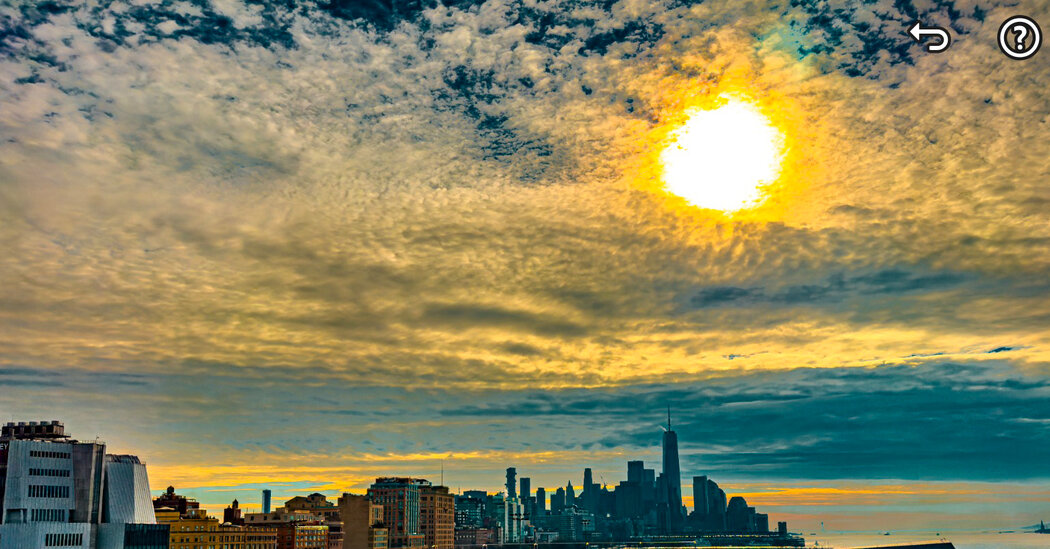Smartphone cameras and the software that automatically processes the images have become so good at taking great photos in a snap that most people don’t even carry a separate camera anymore (well, except for some Gen Zers who go retro). to go). There are plenty of apps that can put a filter on a photo to make it look even better, but if you really want to improve your mobile photography skills, consider the format the pros use: RAW.
Editing a RAW file is more work, but it gives the photographer more control over the light and color in the image after it’s captured – and in some cases enough pixels to crop the photo significantly and still look sharp to show. Here’s a guide to getting started.
What is RAW?
“RAW” means raw data – and lots of it. Many phone cameras automatically capture images and save them as JPEG or HEIC files, which shrink and remove some of the image data to reduce the file size. However, when you choose to capture images as RAW files, you get uncompressed and unprocessed data from the camera’s sensor. Without the compression, RAW images contain more detail and colors to work with. But the files can be enormous.
There are many specialized camera tools that capture and edit RAW files available in the app stores. (More on that later.) But if you’re just playing around right now, here’s how to use the options available on the latest iPhone and Android models, as well as other free tools.
The RAW settings of the iPhone
On an iPhone 12 Pro (or later Pro and Pro Max models) running at least the iOS 14.3 operating system, you can capture and save RAW files by going to the Settings app and choosing Camera and then Formats. Tap the button next to Apple ProRAW, Apple’s variation on the RAW format. On iPhone 14 Pro models, you can choose the resolution to store your RAW files: 12 megapixels or a whopping 48 megapixels.
Then open the iOS Camera app, align the shot and choose the RAW function at the top right of the screen. Now all you have to do is tap the shutter button to save the file to the camera roll.
A 48-megapixel file size allows photos with good detail, even with significant cropping, but the file size of each photo can be 75 megabytes or larger. If you have an iPhone with a terabyte of space, the larger file sizes are less of an issue, but phones with less storage space can quickly run out of space.
Only photos taken with the iPhone’s main camera can be saved at a resolution of 48 megapixels. The photos taken with the phone’s wide-angle or telephoto cameras (or photos taken in night mode or with a flash) are automatically saved at 12 megapixel resolution.
RAW options for Android
Finding the RAW settings on an Android phone depends on the device and manufacturer, so check your phone’s support site for specific instructions.
If you have one of Google’s Pixel phones running Android 13, go to the Camera app and tap the down arrow in the top left corner, choose More settings, then Advanced. Then tap the button next to RAW + JPEG Controls. The camera captures the image in both JPEG and RAW formats, but saves the larger files in a separate RAW folder in the Google Photos app.
On Samsung’s Galaxy phones, the camera settings include a Pro mode and advanced photo options to save images as RAW files. In the settings, go to “Format and advanced options” and tap the button for RAW copies. For late-model Galaxy phones, Samsung also recently released its free Expert RAW camera app, which is available on the Galaxy Store.
Edit your RAW files
If you have an iPhone, you can use Apple’s Photos app to edit RAW files. For Android phones, Google Photos offers “limited” format support, but the older photo-editing app, Snapseed, has a tool to edit RAW files. The Snapseed app, which is free and works on both Android and iOS, has a support site with an online tutorial and a how-to video on YouTube for beginners.
At first glance, RAW files can appear flat, cloudy, and bulky. But once you start processing them in a compatible photo editing program, you can take advantage of all that extra data.
In the editing app, you can use the on-screen slider and other controls to adjust an image’s white balance, which neutralizes color casts; change the exposure; pull parts of the photo out of the shadows; deepen colors and more.
Some photographers prefer to process RAW files with tools in Adobe Lightroom, which have mobile versions for Android, iPhone, and iPad devices (free, with in-app purchases). Adobe’s site has a tutorial, as do many websites that specialize in digital photography.
If you want to edit your photos on a larger screen, you can save the files to a cloud server or transfer the file from your mobile device to a desktop computer via Wi-Fi or AirDrop and then download the desktop version of Adobe Lightroom or one of the many desktop photo editors. apps (including Apple’s Photos for Mac).
Once you’re ready for more advanced techniques using RAW files, you can purchase or subscribe to the myriad of specialized photography apps in your app store, including VSCO (for Android and iOS) and ON1 Photo RAW (also for Android and iOS). iOS). For those using iPhones and iPads for editing, you might also consider the Halide Mark II, Darkroom, and RAW Power apps.
When you’re done editing your RAW image, you can save it as JPEG or other common formats for sharing, printing, or making art out of.

